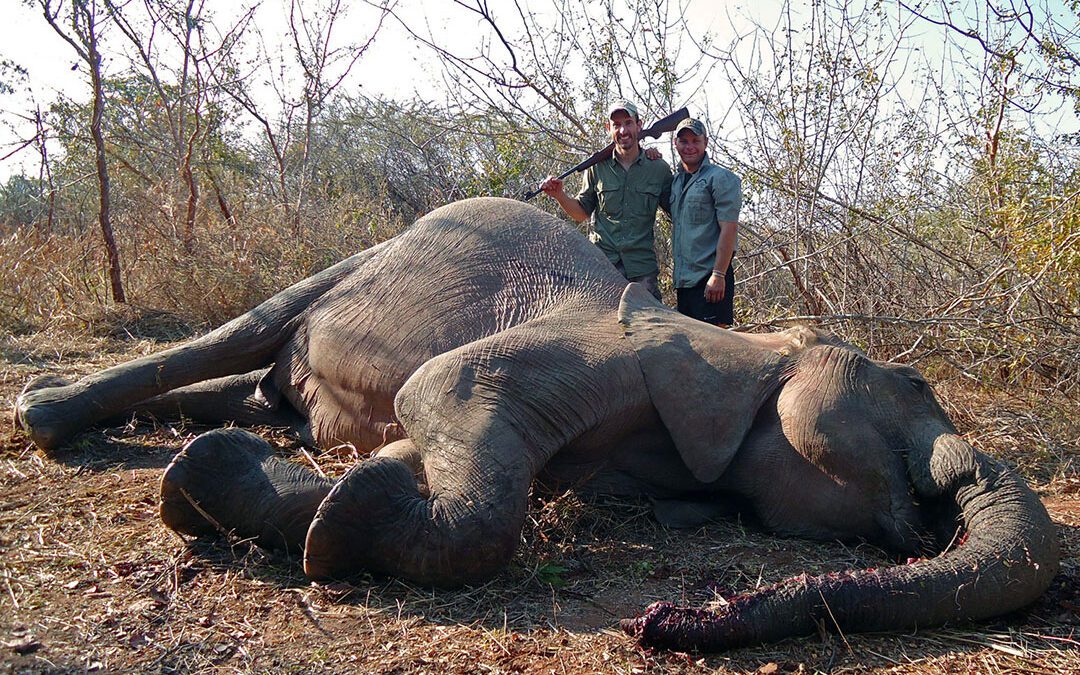As the sweltering afternoon sun beat down on my exhausted body, our team advanced forward in a single file line on the trail of the elephants, stopping only briefly when the trail was lost or to check the temperature of the dung piles. They had been getting warmer over the past two hours on the trail. The temperature ceased to matter, however, when we heard the branches breaking from the herd feeding ahead of us.
Soon I could smell elephant urine, the acrid scent consuming and pungent from the herd that was less than 30 yards away from me in the jess, the Zambezi Valley’s infamously thick and nearly impenetrable brush. My heart pumped wildly from adrenaline mixed with a healthy dose of fear. Hunting tuskless elephant cows in the Zambezi Valley is considered by many to be the world’s most dangerous hunts. My PH, Dalton Tink, looked at me and nodded toward them.
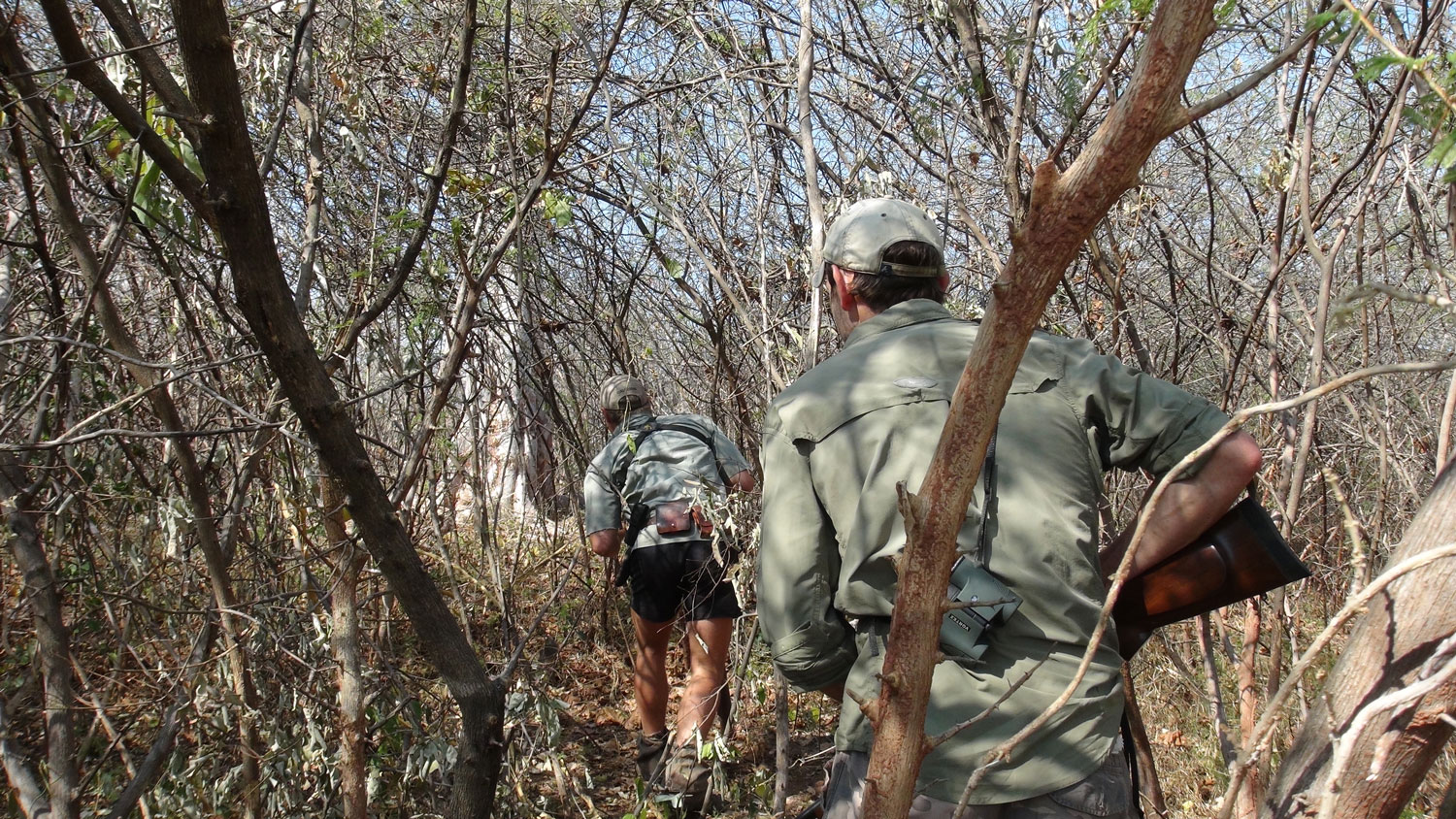
…through the thickness, half stooping, half crawling, we slowly crept to just over ten yards from the big tuskless. Dalton eased to his left out of my way and looked over at me. I looked at the elephants, their ears still flapping, and gave him a quick shake of the head. It was too thick to raise my gun, much less shoot through. As Dalton shifted, I moved two feet over to a small opening where he had been. During the movement, a stick snapped. Horrified, I focused on the bulk before me, only 12 yards away. There was no movement. No ears flapping. No tail flipping back and forth. Complete stillness. Then the big cow raised her head and turned toward us…
It’s time, I thought. I slightly opened the bolt and made sure I had a solid in the chamber. It was the culmination of hours of tracking, days of traveling, a year of planning and only a lifetime of dreaming. I stooped over and stepped into the jess.
Since I was old enough to find Africa on a map, I dreamed of hunting elephants. A lifetime of reading the writings of the elephant hunting adventures of old had me hooked. As the piggy bank grew from years of side jobs, I finally made plans to go with Martin Pieters Safaris on the 2.2 million-acre Omay concession in the Zambezi Valley wilderness. I knew it was wild and untamed Africa at its finest, and a notable dangerous game area.
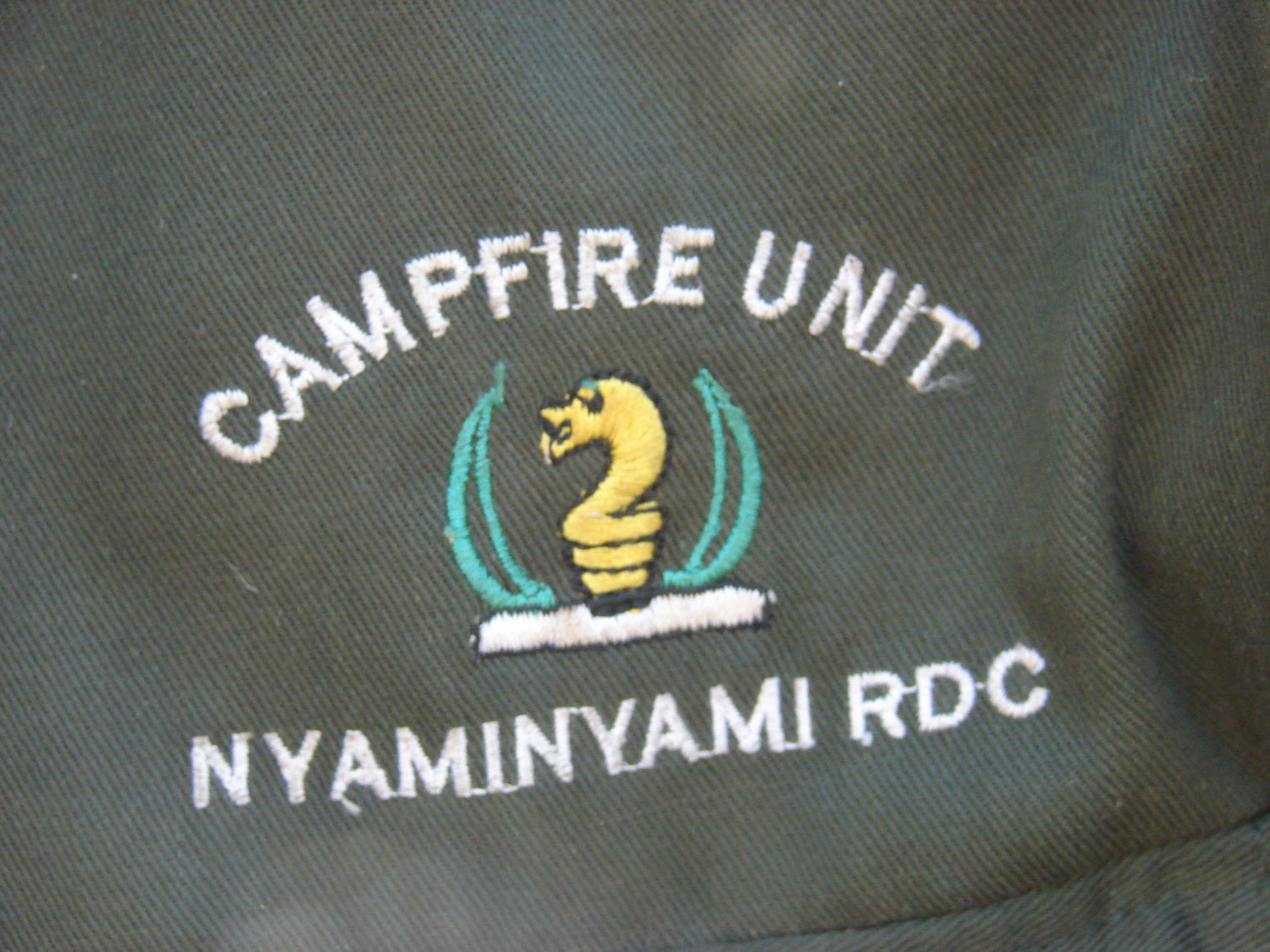
The Omay is a CAMPFIRE concession.
It is run by the local tribal council and the trophy fees go to the community as an incentive to protect the wildlife and view it as an asset. Schools, medical clinics, soccer fields and water wells paid for by hunting dollars dot the villages of the Omay. In a world of increasing human population and fewer and fewer wild places like the Zambezi Valley, game must pay for itself or it will be gone. Sport hunting gives value to the game. In much of the Zambezi Valley, a place so thick, rugged and isolated that large scale photo safaris are impractical, like many other places in wild Africa, the land’s highest use is sport hunting.
I was paired with PH Dalton Tink, a 27-year-old Zimbabwean who has been in the game for nine years; some as an apprentice, but mostly as a fully qualified PH. He did much of his apprenticeship on the Omay and, besides a season in Mozambique, has done most of his hunting there since. As an apprentice, he gained a bit of notoriety from a video that went viral of him shooting a wounded leopard off of a fellow PH as it was mauling him. This being my first dangerous game hunt, his calm but cautious confidence was a welcome companion.
Zimbabwe has quotas for trophy bull elephant as well as tuskless cows. The tuskless gene is an undesirable gene perpetuated by decades of poaching. In allowing hunters to kill tuskless cows, they are not only helping with the carrying capacity issues in Zim, but also helping remove an undesirable trait.
Hunting tuskless elephants involves getting into and sifting through cow herds to find a mature tuskless that has no dependent calf at heel. It seems straight forward and, in theory, it is. But the cows are considerably more volatile than bulls and, when they consider their personal space has been violated, possess a ferocity that makes a Cape buffalo seem kind of cute. Hunting tuskless elephants involves not only pursuing, but also running away from angry elephants, as I was to find out. But more than anything, I found that elephant hunting is defined by tracking—miles upon miles of tracking.
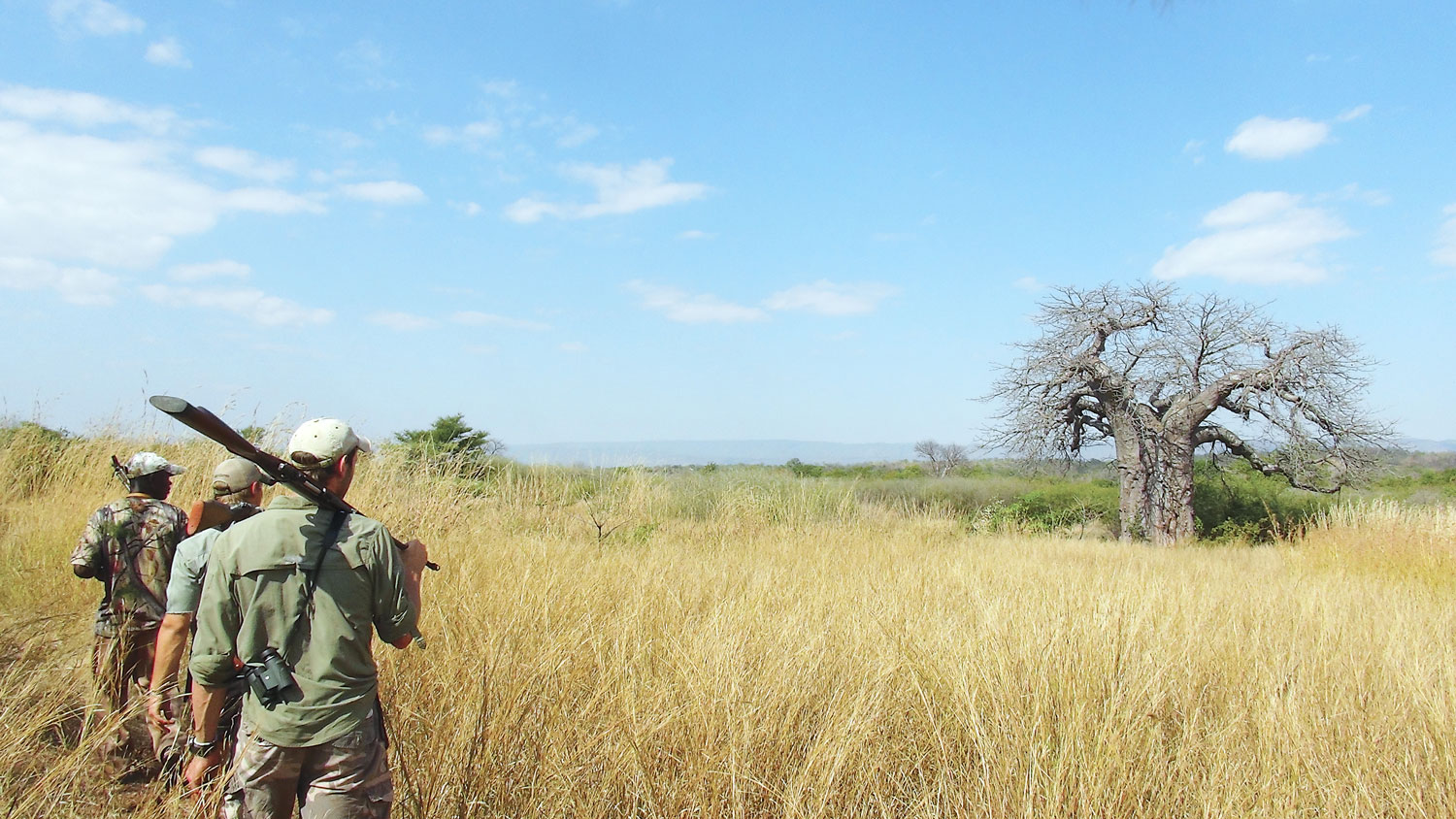
The dry, yellow grass felt crisp against my legs as we moved through the valley. I was awestruck by its rugged beauty. Gargantuan baobab trees wider than a country two-lane road topped with their twisted root-like branches towered overhead like something out of a Dr. Seuss book. In contrast to the beauty of the open savanna, I nervously eyed the jess. The patches loomed like a black wall of nearly impenetrable brush.
I knew the elephants had the advantage in the jess. Tongai, our tracker, continued on the spoor ahead of Dalton and me. As I watched him, I realized I was watching a true artist at work; his medium, tracking, and his canvas, the sunbaked, rocky earth of the Zambezi Valley. He was meticulous on the spoor, always making sure we were on the correct track. It was a constant pattern of forward movement occasionally punctuated by a shaking of his head as he turned to retrace his steps and find the right tracks. After hours on the trail, the team conferred in the Shona language. I couldn’t understand the words, but the meaning was obvious—we were getting close.
Suddenly, we heard a loud snap, almost like the shot of a .22. And then another. Branches breaking. Elephants! Dalton checked the wind and we moved toward the sound. Soon we were rewarded by the sight of the tail end of the herd caught in the open for just a moment. We watched a few seconds, and then they were swallowed by the jess.
We got the wind right and made a purposeful approach. Two hundred yards of walking and we slowed our pace and peered into the jess the elephants had disappeared into. I made out some movement through the branches and a grey wall of an elephant’s side materialized, then another. The wind was good, and I could make out the movement of ears and tails flapping— “elephants at ease,” according to Dalton’s educational lecture around the campfire the night I’d arrived in camp. He had warned me that when the ears stop flapping and the beasts stand completely still, they know something is up and it can get hectic pretty quick.
Dalton whispered, “The two closest are both tuskless and neither have calves. The one facing the right is huge. I thought she was a bull at first.” Game on, I thought. I peered in. Ears still flapping. Branches breaking. Good to go.
I could tell Dalton wasn’t super excited about our only approach option which was straight into the jess. He told me in a serious tone and no uncertain terms that we were going in, dropping her and getting out. At least that was the gist of it in printable terms. I got the idea. We weren’t going to linger around and admire the shot. I made sure a solid was in the chamber and then I followed him into the jess.
Through the thickness, half stooping, half crawling, we slowly crept to just over ten yards from the big tuskless. Dalton eased to his left out of my way and looked over at me. I looked at the elephants, their ears still flapping, and gave him a quick shake of the head.
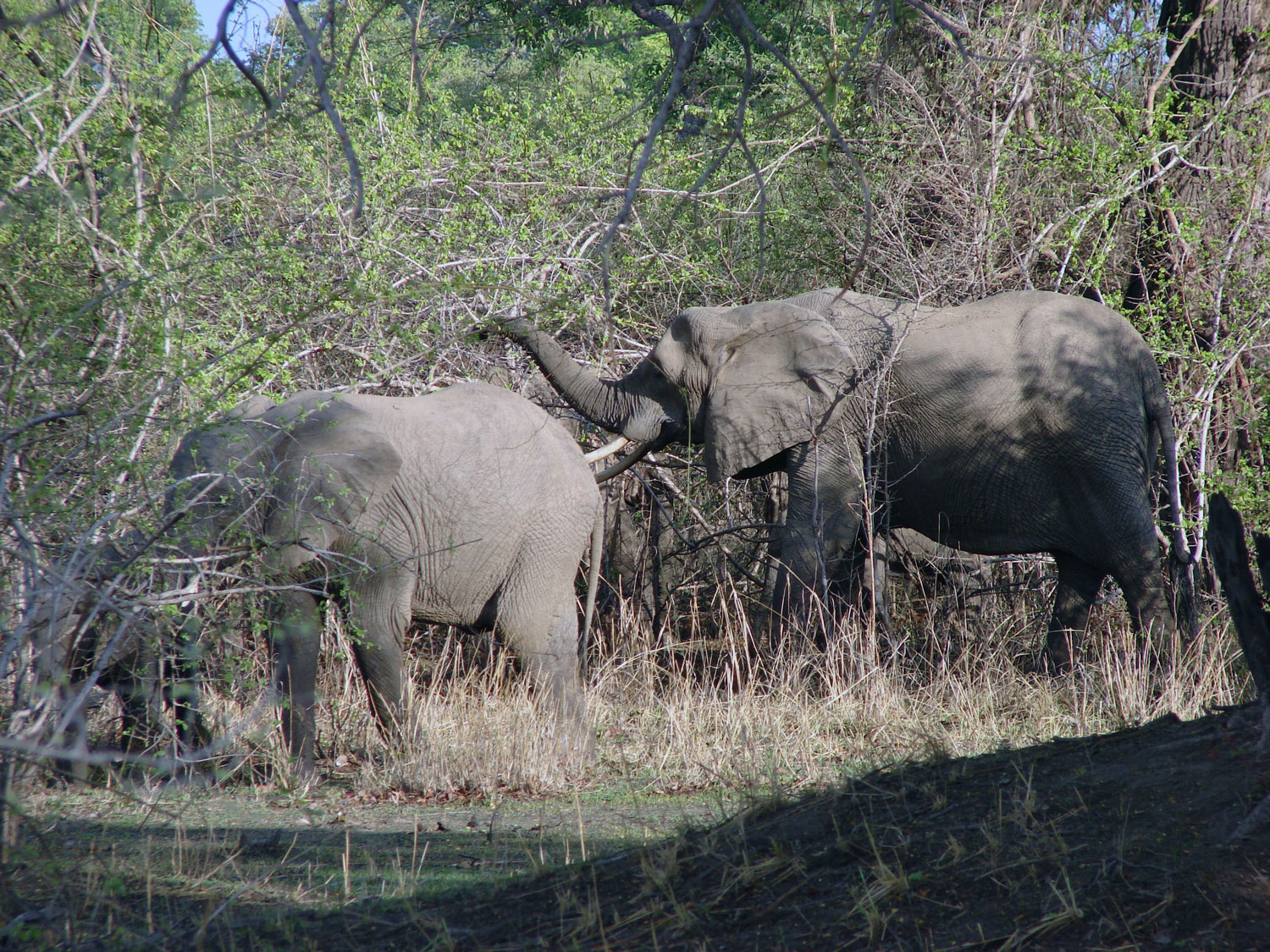
It was too thick to raise my gun, much less shoot through. As Dalton shifted, I moved two feet over to a small opening where he had been. During the movement, a stick snapped. Horrified, I focused on the bulk before me, only 12 yards away. There was no movement. No ears flapping. No tail flipping back and forth. Complete stillness. Then the big cow raised her head and turned toward us. I raised my .375 while still on one knee. My rifle suddenly felt ridiculously puny and inadequate.
As her head swung fully to face me, I put the front sight where the brain was, hidden between the two zygomatic arches behind her eyes. I heard Dalton whisper, cool as can be, “frontal brain,” and I started to squeeze the trigger. But in one fluid movement, she turned her head to leave and began to disappear behind a baobab tree as she made her getaway.
After months of practicing for and envisioning the perfect brain shot, it became unavailable; and as the trophy was almost out of reach, pragmatism won out and my target became her car door-sized lungs. The gun dropped, found the shoulder as it was inches from disappearing behind the tree, and I was jolted by the recoil of the .375.
“Go. Go! Go!” Dalton hissed, although I needed no prompting.
I ran through the jess the way we came, vaguely aware of the thorns shredding my arms and legs and the sound of a herd of elephants on the move. Once in the open we could hear the elephants trampling through the jess in the other direction, and then silence.
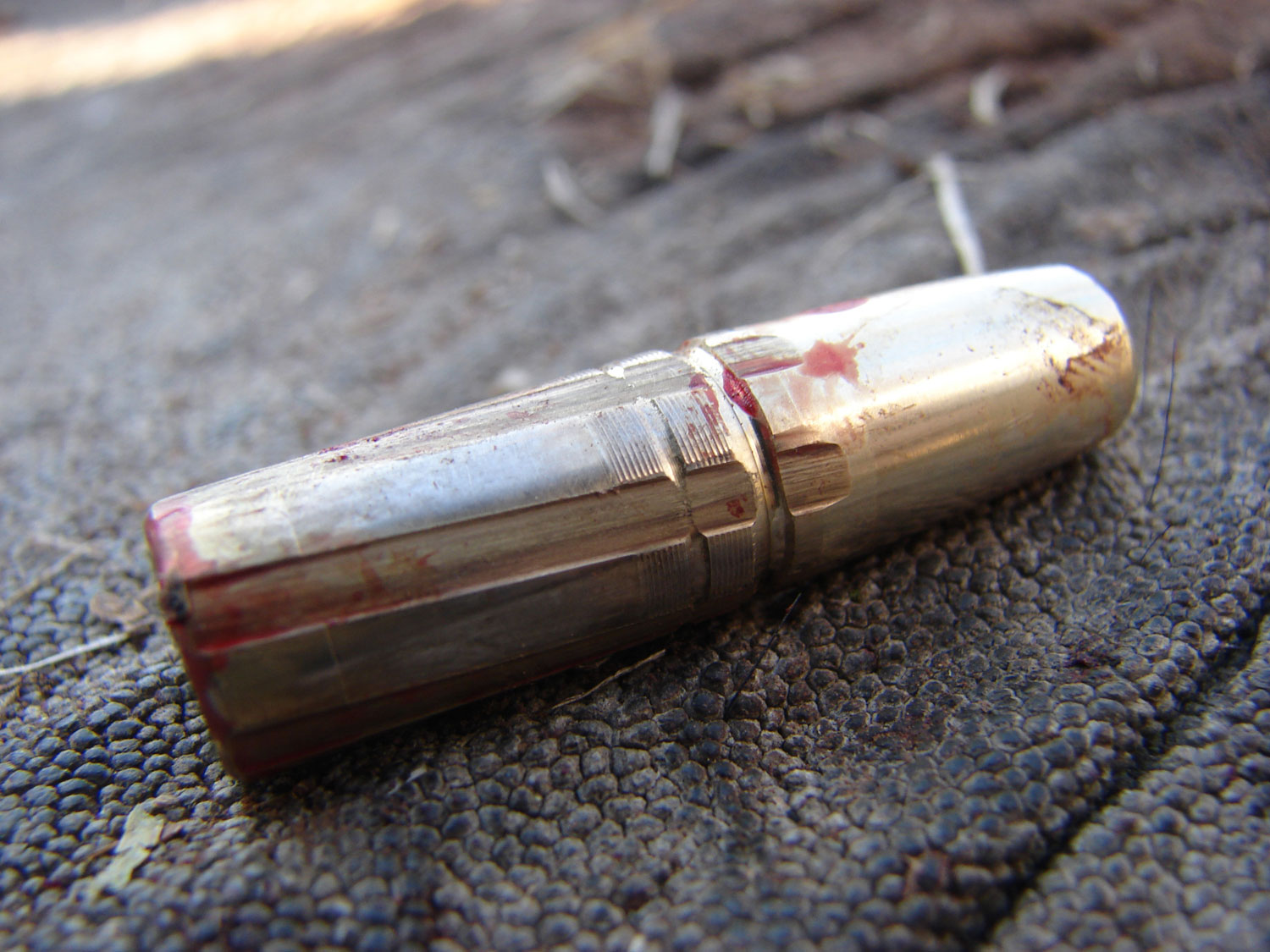
The single Norma 300 grain solid from the author’s CZ 375 H&H Mag made quick work of the huge tuskless.
“I saw the dust fly where you hit her,” Dalton told me. “The shot looked good, but we need to wait here. They’ll come back to her before they leave for good. If they find us, we’ll have to run.”
They found us. And we ran. When the herd filed out of the jess, a psychotic looking one-tusked cow raised her trunk over her head like some prehistoric periscope and caught a whiff of our scent. She came at us like a wraith escaped from hell with a scream that made the angriest bull elk bugle sound benign. Her feet ate up the distance between us stirring up a cloud of dust, but eventually, before we had to resort to our rifles, she decided to take her business elsewhere.
Somehow my pants remained dry and when Dalton was sure the herd was gone for good, we slowly began the tracking job. After following Tongai for miles over the previous few days, sometimes never even seeing what in the world he was seeing that kept us going on the trail, I was relieved that even I could do this tracking. I may have been able to do it blindfolded, simply by feel alone. It looked like an excavator had gone through with its bucket down. It was an elephant-sized tunnel through the jess that led right to my elephant.
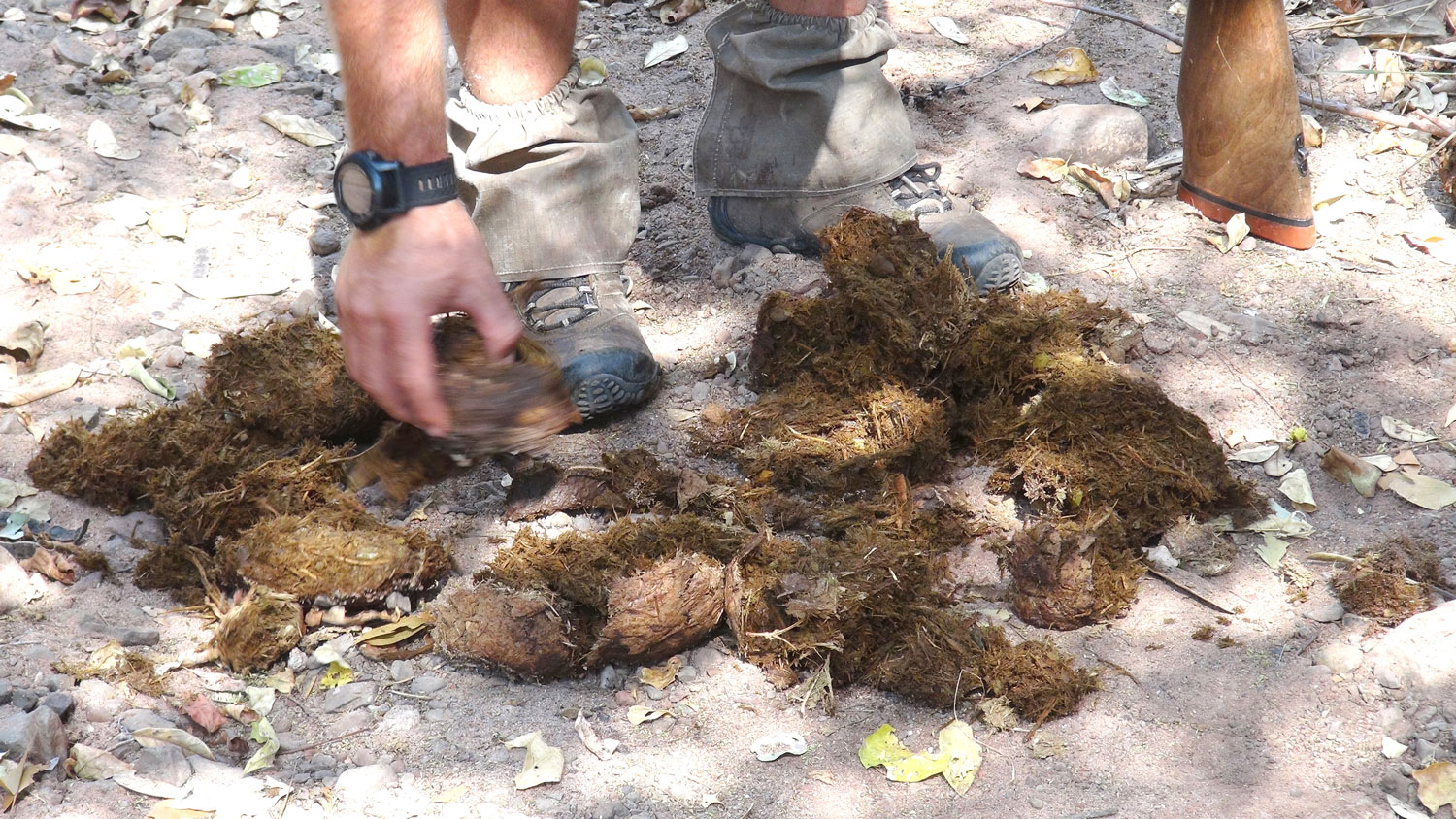
Robert Ruark once wrote that it is appropriate to cry at the killing of one’s first elephant. I did. It seemed I had no say in the matter, and although I couldn’t pinpoint the exact reason, I knew it had something to do with a dream realized and also the passing of such a great beast. She was big and old, one of the biggest tuskless of Dalton’s career. Her heals were worn and her dung contained undigested plant matter, evidence that she had likely been on Earth possibly as long as half a century.
As tradition dictated, I cut the completely hairless tail off of the elephant to claim ownership. Tongai was sent to the nearest village to alert them that an elephant was down. In a few hours, more than 100 people showed up with machetes, knives and hatchets. Our team ate some meat cooked over an open fire at the kill site, but the rest was given to the inhabitants of the area, the people who put up with the crop-raiding and people-smashing that happens on an all too regular basis.
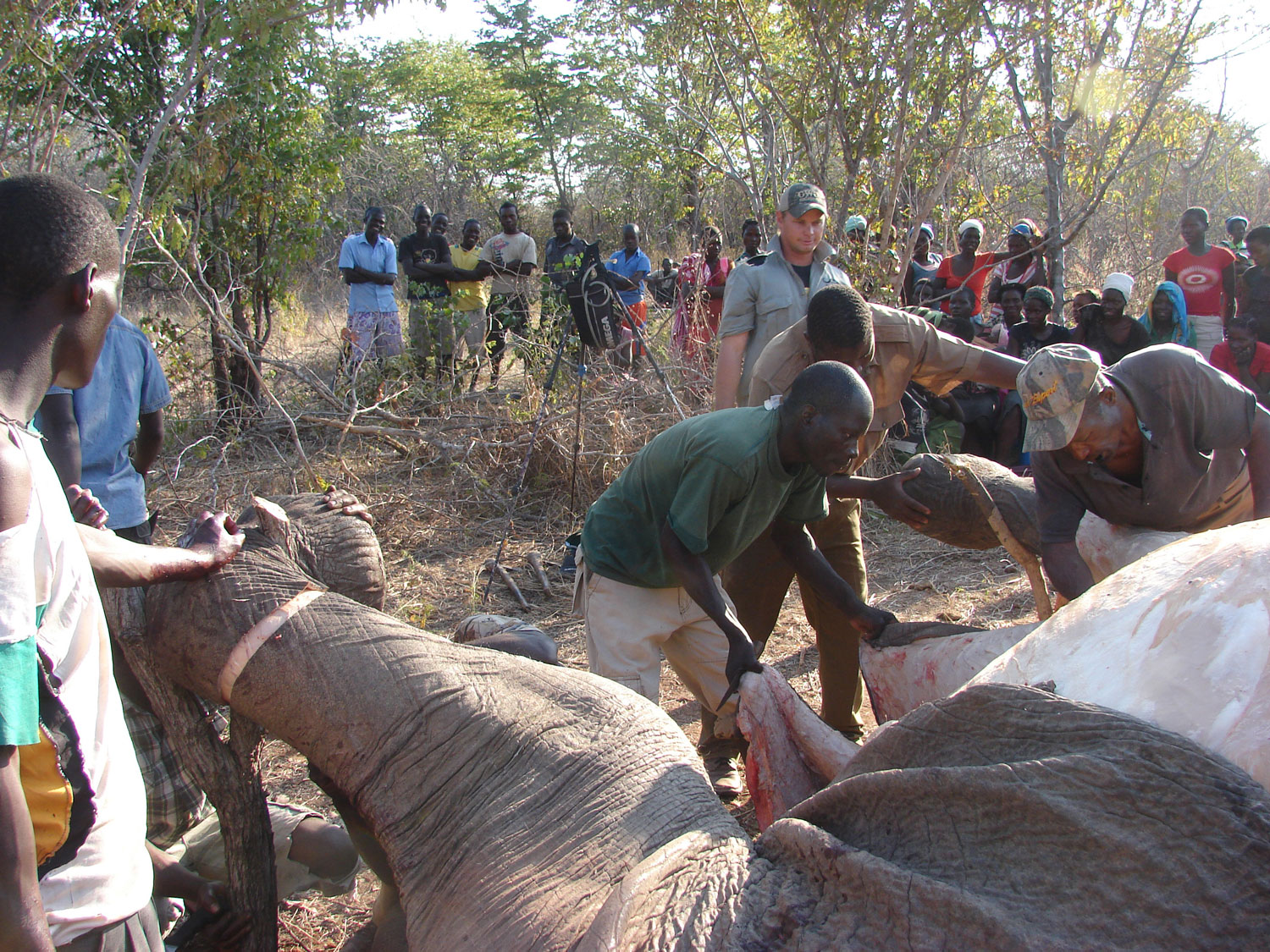
As I watched the locals claim their much-needed protein, I reflected on the seemingly counter-intuitive idea that hunting actually does save game animals. Without sport hunting dollars in areas like the Omay, the value of game is reduced to almost nothing. Saving the meat on its back is weighed against the destruction it causes to crops and livestock.
In the Omay, game is tolerated because it has value to those who live there. That, combined with serious hunter-funded anti-poaching efforts and scientifically managed quotas, has caused game to remain a sustainable resource. Hunting is still a challenge despite growing game numbers, but that is the draw of the Valley. I was only a few days into my safari but was already thinking about returning to the Omay for another confrontation in the jess.
This story originally appeared in the 2020 May/June issue of Sporting Classics magazine.

